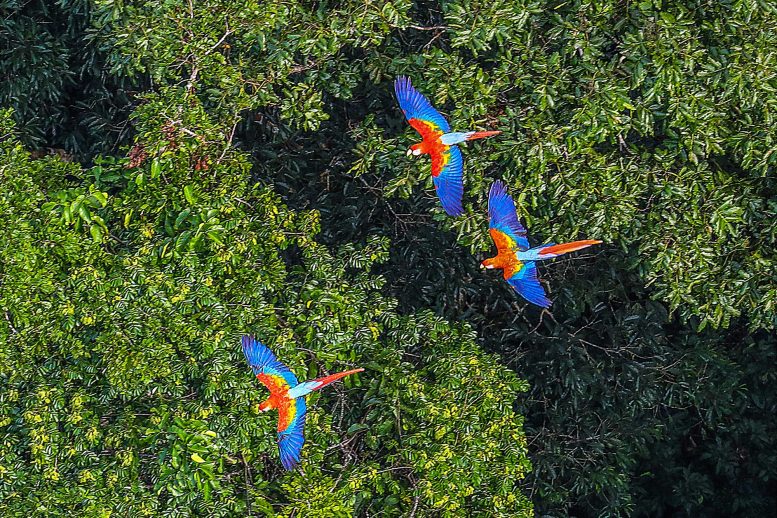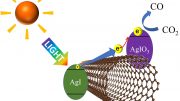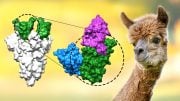
A new study reveals critical stressor thresholds in the Amazon rainforest, suggesting that combined threats could push the ecosystem to a tipping point.
Global warming may be interacting with regional rainfall and deforestation to accelerate forest loss in the Amazon, pushing it toward partial or total collapse.
Research published on February 14, 2024, in the journal Nature, has identified the potential thresholds of these stressors, showing where their combined effects could produce a ‘tipping point’ – in which the forest is so fragile that just a small disturbance could cause an abrupt shift in the state of the ecosystem.
The study was led by the Federal University of Santa Catarina in Brazil, and includes experts from the University of Birmingham. Its authors hope that by understanding the most important stressors on the rainforest environment, they can develop a pathway for keeping the Amazon forest resilient.
Ecosystem Transitions and Global Climate
Lead author Bernardo Flores, from the University of Santa Catarina, said: “Compounding disturbances are increasingly common within the core of the Amazon. If these disturbances act in synergy, we may observe unexpected ecosystem transitions in areas previously considered as resilient, such as the moist forests of the western and central Amazon.”
These ecosystem transitions could include a forest that may be able to recover but is still trapped in a degraded state and dominated by opportunistic plants such as bamboo and vines, or a forest that is unable to recover and remains trapped in an open-canopy, flammable state.
The research findings are important because of the vital role the Amazon plays in the global climate system. For example, Amazonian trees store massive amounts of carbon which, if released, could accelerate global warming. showed that the Amazon temporarily to act as a carbon sink during the 2015 drought.
Stressors, Biodiversity, and Global Cooperation
Co-author, Dr Adriane Esquivel-Muelbert from the Birmingham Institute of Forest Research, said: “We have evidence showing that rising temperatures, extreme droughts, and fires are can affect how the forest functions and change which tree species can integrate the forest system. With the acceleration of global change there’s an increasing likelihood that we will see positive feedback loops in which, rather than being able to repair itself, the forest loss becomes self-reinforced.”
The study also examined the roles of biodiversity and local communities in shaping Amazonian forest resilience. They argue that successful approaches will depend on a combination of local and global efforts. This will include cooperation between Amazonian countries to end deforestation and expand restoration, while global efforts to stop greenhouse gas emissions mitigate the effects of climate change.
During the recent COP28 Climate Conference, the team published a set of policy briefs setting out steps that local, regional, and global organizations need to take to prevent the Amazon from reaching a tipping point.
For more on this study, see Deciphering the Amazon’s Shift: From Carbon Sink to Climate Catalyst.
Reference: “Critical transitions in the Amazon forest system” by Bernardo M. Flores, Encarni Montoya, Boris Sakschewski, Nathália Nascimento, Arie Staal, Richard A. Betts, Carolina Levis, David M. Lapola, Adriane Esquível-Muelbert, Catarina Jakovac, Carlos A. Nobre, Rafael S. Oliveira, Laura S. Borma, Da Nian, Niklas Boers, Susanna B. Hecht, Hans ter Steege, Julia Arieira, Isabella L. Lucas, Erika Berenguer, José A. Marengo, Luciana V. Gatti, Caio R. C. Mattos and Marina Hirota, 14 February 2024, Nature.
DOI: 10.1038/s41586-023-06970-0









With regard to so-called Tipping Points, the only thing that is constant in the world is change. Humans have such short lives, compared to the rate of geological change, that we tend to think of our local environment as being the way things ‘should’ be, and any changes are therefore unnatural and probably the result of humans, as though humans are themselves unnatural. Yet, humans follow the same restraints of food and other resources as any other animals. The primary difference being that humans delude themselves into thinking that they can see the future and can control it. At best, humans can envision a potential future shaped by their limited knowledge of how the biosphere can, but not necessarily, impact the lithosphere and atmosphere. There have been many self-anointed seers and prophets, none of whom had clear visions of what the future held. I don’t know that long-term investors have done better than a flip of a coin, with some becoming wealthy and others losing everything. No one really saw the future role of television, or predicted ubiquitous smart phone use, or even computers becoming entertainment enablers. There is no precedent for accurate predictions of how the biosphere will change because of things that humans do. Ultimately, most anthropogenic changes that are considered existential threats only threaten humans. Chernobyl has become a sanctuary for wild animals in less than 30 years, or about one human generation. “Ask not for whom the bell tolls, it tolls for thee.”